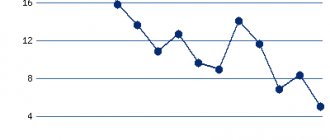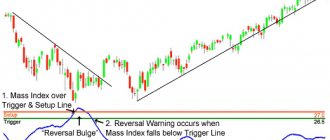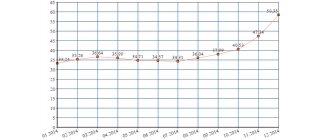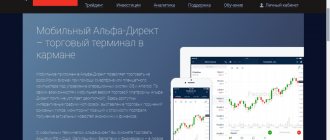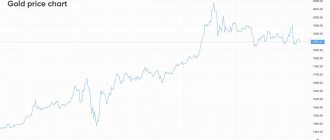When conducting medium-term trading, you can limit yourself only to technical indicators, but if you prefer long-term trading, you should definitely take into account fundamental analysis, including the money supply, which we will talk about today. To begin with, I suggest you remember a little history. Previously, at the dawn of civilization, people used natural exchange, that is, they exchanged livestock for products and so on. This system was inconvenient and had many disadvantages:
- The exchange implied the exchange of only whole units. So for 1 cow you could get 10 piglets, but when a person needed only 5 piglets, a dilemma arose.
- The exchanged products had to be constantly transported, which caused great inconvenience.
- Communities have always suffered from a “crisis of overproduction.”
To get rid of all these shortcomings, people came up with the idea of using precious metals; initially, gold was used for these purposes. Then people discovered that copper, which was used to make weapons at that time, was much easier to melt down into smaller pieces and was also easy to transport.
After this, metal began to act as a universal equivalent. If we consider our example with the cow and pigs, then with the advent of coins, the pattern of interaction between sellers and buyers has changed significantly. In our example, a third party appeared - this is the common market.
Along with copper, people continued to exchange precious metals, since they oxidized less. In addition, they could be used to make household and ceremonial decorations.
It is this moment that is considered the starting point in the development of commodity-money relations. Moreover, at the very beginning, any landowner could find a copper deposit and smelt the required number of plates.
After some time, at the time of the emergence of the state, the right to issue funds was transferred to the emperors and kings. It is during this period that all the fun begins.
Before “monopolization,” the price of money was regulated by the market, that is, if people had a lot of gold in their hands, its price fell, that is, sellers began to ask for more gold for their goods.
At the same moment, the price of copper could sharply fall due to a reduction in this volume of metal in the country. This is a completely natural process, which many years later A. Smith called “the invisible hand of the market.”
With the advent of government agencies, everything became somewhat more complicated, since it was they who established the legal form of payment, collecting taxes from citizens and paying employees salaries. As the population increased, the government had to look for ways to increase the amount of money in circulation. During times of precious metals shortages, this was achieved by producing coins of lower quality. Over time, inflation arose, resulting in the use of banknotes today.
This was a superficial description of all processes, but two important conclusions can be drawn from all this. The first is that government agencies are responsible for issuing funds. The second is the volume of funds in circulation, directly proportional to their current price.
Money supply concept
The money supply is the volume of the state reserve of money in ruble equivalent, serving the cash flows that form money circulation.
Money supply is the totality of money circulating in a country’s economy in a certain period of time, both cash and non-cash, located in current and savings accounts. In other words, it is the total amount of money in circulation in a certain period of time. Thus, the total money supply includes non-cash and cash money.
The cash supply includes:
- small coin;
- paper money (treasury bills, banknotes);
- credit funds (checks, bills).
Non-cash money supply is taken into account:
- on debit and credit plastic cards;
- on deposits;
- on settlement and current accounts;
- in electronic money.
Countries that demonstrate a favorable economic situation have predominantly non-cash cash flows. The volume of cash in circulation by citizens and other participants in the national market is no more than 5% of the total money supply. In states with a banking system of low reliability and insufficiently developed market relations, the ratio of non-cash and cash money supply is radically different. The more cash on hand, the lower the level of the market economy.
Dynamics of the share of cash in the total money supply of Russia
| On the date | Share of cash in money supply (M2) |
| 01.01.2009 | 29% |
| 01.01.2010 | 26% |
| 01.01.2011 | 25% |
| 01.01.2012 | 25% |
| 01.01.2013 | 24% |
| 01.01.2014 | 22% |
| 01.01.2015 | 23% |
| 01.01.2016 | 21% |
| 01.01.2017 | 20% |
| 01.01.2018 | 20% |
| 01.01.2019 | 20% |
| 01.01.2020 | 19% |
| 01.04.2020 | 20% |
Despite the fact that the structure of the monetary volume has changed in recent years, and the cash ratio has decreased by 10%, the shadow economy in the Russian Federation is thriving, since the level of cash is not yet low enough. The reluctance of the population to place free capital in bank accounts indicates their distrust in the banking structure in particular, and in the credit and financial policy of the state in general.
Alexey Ponomarenko, senior managing director and director of the NDO Management Center of Sberbank
Today in Russian retail there is a steady trend towards a decrease in the share of cash revenue. Bank of Russia statistics confirm this fact. The money that the regulator printed in the spring and early summer will not go to retail. People took them off during a period of financial instability, which is only partly related to the coronavirus crisis. Once the economic situation stabilizes, this money will return to bank or brokerage accounts. And in retail, the population will increasingly pay non-cash, participating in bonus and cashback programs.
Monetary aggregates M0, M1, M2, M3, M4
The principle of constructing the money supply is based on the decreasing liquidity of the assets included in its composition. The composition and structure of the cash money supply is characterized by monetary aggregates. The hierarchical structure of monetary aggregates assumes that each subsequent aggregate includes the previous one. From country to country, there may be differences in the definition and classification of each unit.
Monetary aggregates are types of money and funds that differ in their level of liquidity (the ability to quickly convert into cash), an indicator of the structure of the money supply. They are measures of the money supply, depending on the type of account in which they are located.
The Central Bank of the Russian Federation calculates monetary aggregates M0, M1, M2, M3.
The monetary aggregate M0 is cash circulating in the economy (paper banknotes and metal coins), which is the most liquid part of the money supply.
Monetary aggregate M1 = M0 (cash) + other cash equivalents that can be easily converted into cash (checks, household funds on demand deposits, funds on settlement, current and other demand accounts of non-financial and financial organizations (except credit)), expressed in national currency.
Monetary supply M2 = M1 + short-term deposits (time deposits, funds in time deposit accounts attracted from the public, non-financial and financial organizations (except credit)) in national currency and some money market funds. The monetary aggregate M2 is the money supply in the national definition of Russia.
Monetary supply M3 = M2 + long-term deposits, government bonds, Treasury savings bonds, certificates of deposit.
The M4 money supply is calculated in some countries such as the UK. Monetary aggregate M4 = M3 + all monetary components and monetary surrogates with lower liquidity, a portfolio of government securities held by non-bank holders.
What caused the change in the cash share?
Today, the change in the cash ratio in the structure of the money supply is caused by:
- introducing innovations;
- development of non-cash turnover.
But mainly the changes occurred due to the following non-economic factors:
- problems of political life;
- social problems;
- internal mental problems.
A factor in the stabilization of the share of cash after World War II was the disappointment of the population in the modernization of the settlement and payment mechanism. Also, people simply want to maintain confidentiality when making payments.
Monetary circulation and the structure of the money supply are closely related.
The generally accepted reasons for increasing the share and stabilizing cash in the monetary aggregate are:
- increased spending in the service sector, tourism and expensive goods designed for a short period of use;
- increasing the number of gaming, trading and telephone machines;
- use of cash in various currency speculations;
- psychology of a nation, the power of habit and tradition.
The processes described above are very strongly related to the depreciation of funds. Inflation forces people to transfer money from demand deposits to time deposits, where credit institutions pay more interest.
The structure of the money supply is characterized by monetary aggregates. They are an indicator of the volume of liquid assets that are used in the economy as money.
Analyzing Russian data after 1991, it is not difficult to notice a rapid increase in the cash ratio in the monetary aggregate, while the rest has decreased slightly in recent years.
The main reason for the increase in the share of cash at the beginning of market transformations (1992) is the desire of business entities to avoid an unbearable tax burden. This suggests that banknote emission was significantly ahead of non-cash emission. That is, cash payments, of course, replaced non-cash turnover, but this does not at all indicate insignificant changes in the structure of the money supply.
Volume of money supply in Russia by year
Dynamics of the money supply (M2) at the beginning of 2008 - 2021, beginning of the 2nd quarter. 2021 according to the Bank of Russia (CBRF)
| Period | Money supply (M2), billion rubles. | Cash (M0), billion rubles. | Non-cash funds, billion rubles. |
| 2008 | 12869,0 | 3 702,2 | 9166,7 |
| 2009 | 12 975,9 | 3 794,8 | 9 181,1 |
| 2010 | 15 267,6 | 4 038,1 | 11 229,5 |
| 2011 | 20 011,9 | 5 062,7 | 14 949,1 |
| 2012 | 24 204,8 | 5 938,6 | 18 266,2 |
| 2013 | 27 164,6 | 6 430,1 | 20 734,6 |
| 2014 | 31 155,6 | 6 985,6 | 24 170,0 |
| 2015 | 31 615,7 | 7 171,5 | 24 444,2 |
| 2016 | 35 179,7 | 7 239,1 | 27 940,6 |
| 2017 | 38 418,0 | 7 714,8 | 30 703,2 |
| 2018 | 42 442,2 | 8 446,0 | 33 996,2 |
| 2019 | 47 109,3 | 9 339,0 | 37 770,3 |
| 2020 | 51 660,3 | 9 658,4 | 42 001,9 |
| 01.04.2020 | 52 327,0 | 10 241,0 | 42 086,0 |
Dynamics of monetary aggregates M0, M1, M2 at the beginning of 2011 - 2020, beginning of the 2nd quarter. 2021 according to the Bank of Russia (CBRF)
| Period | Cash in circulation outside the banking system (monetary aggregate M0), billion rubles. | Transferable deposits, billion rubles. | Money supply M1, billion rubles. | Other deposits included in the M2 monetary aggregate, billion rubles. | Money supply in national definition (monetary aggregate M2), billion rubles. |
| 1 | 2 | 3=1+2 | 4 | 5=3+4 | |
| 2011 | 5 062,7 | 5 797,1 | 10 859,9 | 9 152,0 | 20 011,9 |
| 2012 | 5 938,6 | 6 818,3 | 12 756,9 | 11 447,9 | 24 204,8 |
| 2013 | 6 430,1 | 7 264,0 | 13 694,0 | 13 470,6 | 27 164,6 |
| 2014 | 6 985,6 | 8 526,3 | 15 511,9 | 15 643,7 | 31 155,6 |
| 2015 | 7 171,5 | 8 170,0 | 15 341,4 | 16 274,3 | 31 615,7 |
| 2016 | 7 239,1 | 9 276,4 | 16 515,6 | 18 664,1 | 35 179,7 |
| 2017 | 7 714,8 | 9 927,6 | 17 642,4 | 20 775,6 | 38 418,0 |
| 2018 | 8 446,0 | 11 062,8 | 19 508,9 | 22 933,3 | 42 442,2 |
| 2019 | 9 339,0 | 12 285,1 | 21 624,1 | 25 485,2 | 47 109,3 |
| 2020 | 9 658,4 | 14 203,3 | 23 861,7 | 27 798,6 | 51 660,3 |
| 01.04.2020 | 10 241,0 | 14 895,4 | 25 136,4 | 27 190,6 | 52 327,0 |
History of the indicator
| date | Fact | Previous | Forecast | Unit measurements |
| March 2020 | 3 883 155,00 | 3 454 507,00 | USD million | |
| Feb. 2020 | 3 454 507,00 | 3 442 621,00 | USD million | |
| Jan. 2020 | 3 442 621,00 | 3 426 515,00 | USD million | |
| Dec. 2019 | 3 426 515,00 | 3 315 603,00 | USD million | |
| Nov. 2019 | 3 315 603,00 | 3 252 830,00 | USD million | |
| Oct. 2019 | 3 252 830,00 | 3 202 682,00 | USD million | |
| Sep. 2019 | 3 202 684,00 | 3 271 378,00 | USD million | |
| Aug. 2019 | 3 271 409,00 | 3 260 366,00 | USD million | |
| July 2019 | 3 260 366,00 | 3 274 900,00 | USD million | |
| June 2019 | 3 274 900,00 | 3 244 515,00 | USD million |
Russian money supply in 2021 and as of April 1, 2021
Statistics from the Central Bank of the Russian Federation state that at the end of 2019, the aggregate M2 = 51,660.3 billion rubles, which is 4,551 billion rubles higher than the value at the beginning of the year. or 9.7%. In the first quarter of 2021, the money supply increased by 1.3% compared to the beginning of the year.
The dynamics of the growth of cash outside the banking system in 2019 indicates that they increased by 3.4%. In the first quarter of 2021, the volume of cash (M0) increased by 6% (in monetary terms - by 582.6 billion rubles) and amounted to 10,241 billion rubles.
Bank deposits of the population for 2021 also showed an increase of 10.4% and amounted to 25,268 billion rubles. As of April 1 of this year, the volume of funds on such deposits decreased slightly – by 0.9% and amounted to 25,047.3 billion rubles.
Statistical data indicate that cash (M0) located outside the banking system still accounts for a fairly large percentage of the monetary volume. Despite the fact that the share of cash in the money supply continues to decline, citizens of the Russian Federation continue to spend a lot of cash on purchases, neglecting such payment instruments as plastic bank cards. At the same time, the increase in deposit funds compared to last year is a positive indicator, indicating a successful monetary policy of the state credit apparatus.
US measures
In the United States, the Federal Reserve tracks the M1 and M2 monetary aggregates and publishes reports on their values every Thursday at 4:30 pm US Eastern Time. The central bank uses them to measure the results of its open market operations.
There are also M0 and MB. M0 reflects the dollar value of physical cash and coins, while MB (Monetary Base) includes M0 plus Federal Reserve deposits, which only banks with the Fed can hold.
According to the Federal Reserve, M1 consists of:
- currency outside the U.S. Treasury, Federal Reserve, and depository institution vaults
- traveler's checks from non-bank issuers
- demand deposits at commercial banks less funds in the collection and placement process of the Federal Reserve
- other verifiable deposits.
The monetary aggregate M2 consists of:
- unit M1
- savings deposits (including money market deposit accounts)
- time deposits less than USD 100,000
- balances in retail money market mutual funds.
There is also M3, which the Federal Reserve stopped tracking as of March 2006. It consisted of M2 + all other certificates of deposit (such as large time deposits), Eurodollar deposits and repurchase agreements.
Not very popular, but still reliable
Since the 1990s, money supply measures have become less popular due to various changes in the US financial system and the way the Fed conducts monetary policy. There is a lower correlation between changes in the money supply and key economic indicators such as GDP, unemployment and inflation.
Nowadays, central bank monetary policy is more clearly understood by observing the level of funds that the Federal Reserve injects into the economy. This is why monetary aggregates rarely drive markets in the short term.
However, the more widely tracked M2 is considered useful because it indicates that inflation may be around the corner, despite the fact that it does not directly indicate future spending growth as it once did. It can provide preliminary information about the likely rise in inflation relative to GDP growth. If money supply growth quickly outpaces economic expansion, prices will soon rise.
Monetization rate
The monetization coefficient is an indicator characterizing the economy’s need for money supply. In a state with a positive economic situation and a minimum inflation rate, this figure is at least 50%. In the Russian Federation, the monetization level for 2018 was 43.2%, which indicates the insufficient development of the market economy.
Economy monetization coefficient, dynamics in Russia and other countries
Leonid Gofstein, financial director of the Kalyaev chain of stores
The share of cash revenue in our industry has been declining abruptly over the past three years. In 2021 and 2021, the share of acquiring was 34–37%, and in 2021 this figure was already 58%. Now non-cash payments account for 75% of revenue, which eloquently illustrates the trend.
The state supports and encourages non-cash payments. For example, until September, businesses had discounts on acquiring for online payments: the commission was only one percent of the amount. In addition, the system of fast payments, which is being talked about a lot now, also plays a big role.
However, there is a downside to the downward trend in NDO: the less cash turnover we have, the more expensive collection will end up being. Retail will be forced to switch to alternative collection services, some of which are already available - for example, the use of ADM and online collection. There is also a competing trend in the market: self-collection through public ATMs installed in shopping centers.
Financially, this service may be more profitable than cash boxes, but retail is in no hurry to switch to this technology: self-collection raises questions from the point of view of security and countering internal fraud - a conspiracy to steal cash proceeds on the way to the ATM.
Money supply in different countries
Dynamics of the M2 money supply 2008 - 2021 according to the websites of National Banks, in national currencies
Money supply M2, billions of national currency
| A country | 2008 | 2009 | 2010 | 2011 | 2012 | 2013 | 2014 | 2015 | 2016 | 2017 | 2018 |
| USA, USD | 8265,30 | 8550,50 | 8822,50 | 9692,30 | 10500,10 | 11067,30 | 11728,00 | 12416,10 | 13292,60 | 13937,30 | 14473,00 |
| UK, GBP | 1842,49 | 1906,96 | 2092,59 | 2047,98 | 2058,13 | 2088,29 | 2086,85 | 2134,84 | 2284,26 | 2347,84 | 2419,58 |
| Germany, EUR | 1859,90 | 1849,30 | 1930,50 | 2062,50 | 2220,40 | 2285,20 | 2399,20 | 2605,80 | 2755,90 | 2880,60 | 3019,30 |
| France, EUR | 1357,77 | 1353,65 | 1456,29 | 1514,03 | 1600,46 | 1645,36 | 1707,73 | 1786,38 | 1880,62 | 2047,61 | 2161,91 |
| Japan, JPY | 741700,0 | 764400,0 | 782300,0 | 806900,0 | 827700,0 | 862800,0 | 893100,0 | 920600,0 | 956300,0 | 990600,0 | 1014200,0 |
| Brazil, BRL | 1086,79 | 1185,87 | 1387,91 | 1649,90 | 1792,89 | 1985,47 | 2186,47 | 2334,14 | 2446,07 | 2581,70 | 2848,57 |
| India, INR | 11499,91 | 13557,57 | 16205,66 | 17296,53 | 18501,19 | 20296,91 | 22339,79 | 25149,05 | 20883,21 | 29891,20 | 34088,53 |
| China, CNY | 47516,66 | 60622,50 | 72585,18 | 85159,09 | 97414,88 | 110652,50 | 122837,48 | 139227,81 | 155006,70 | 169023,53 | 182674,42 |
| South Africa, ZAR | 1562,43 | 1589,34 | 1678,42 | 1798,93 | 1869,05 | 2049,69 | 2226,54 | 2441,53 | 2601,20 | 2806,03 | 2893,83 |
| Russia, RUB | 12 975,9 | 15 267,6 | 20 011,9 | 24 204,8 | 27 164,6 | 31 155,6 | 31 615,7 | 35 179,7 | 38 418,0 | 42 442,2 | 47 109,3 |
Dynamics of the M2 money supply 2008 - 2021 according to the websites of National Banks, converted into US dollars at official rates
Money supply M2, billion US dollars
| A country | 2008 | 2009 | 2010 | 2011 | 2012 | 2013 | 2014 | 2015 | 2016 | 2017 | 2018 |
| USA | 8265,30 | 8550,50 | 8822,50 | 9692,30 | 10500,10 | 11067,30 | 11728,00 | 12416,10 | 13292,60 | 13937,30 | 14473,00 |
| Great Britain | 995,94 | 1214,62 | 1350,06 | 1279,99 | 1294,42 | 1338,65 | 1264,75 | 1395,32 | 1692,04 | 1820,03 | 1819,23 |
| Germany | 2734,05 | 2570,53 | 2567,57 | 2866,88 | 2864,32 | 3039,32 | 3190,94 | 2892,44 | 3059,05 | 3255,08 | 3562,77 |
| France | 1995,91 | 1881,57 | 1936,87 | 2104,49 | 2064,59 | 2188,33 | 2271,27 | 1982,88 | 2087,49 | 2313,80 | 2551,05 |
| Japan | 7173,81 | 8159,69 | 8912,05 | 10124,22 | 10369,58 | 8840,16 | 8446,19 | 7605,12 | 8798,42 | 8832,81 | 9191,59 |
| Brazil | 465,03 | 681,06 | 832,98 | 879,57 | 877,36 | 847,55 | 823,16 | 597,76 | 750,53 | 780,44 | 735,15 |
| India | 237,36 | 290,44 | 361,65 | 324,72 | 337,75 | 327,91 | 352,74 | 379,17 | 307,31 | 467,58 | 488,96 |
| China | 6967,25 | 8875,92 | 10997,75 | 13538,81 | 15636,42 | 18289,67 | 19812,50 | 21485,77 | 22303,12 | 25963,68 | 26551,51 |
| South Africa | 167,94 | 215,59 | 253,45 | 221,22 | 220,31 | 195,82 | 192,41 | 156,77 | 190,87 | 228,24 | 200,80 |
| Russia | 437,00 | 453,42 | 599,30 | 680,83 | 814,58 | 882,19 | 535,78 | 449,28 | 600,64 | 696,43 | 646,20 |
The money supply of all countries tends to increase, but no country experiences such growth as China. Since 2008, the volume of M2 in this country has increased 3.8 times, far surpassing the United States in absolute terms. During the same period, the US money supply increased by $6,206.7 billion, or 1.75 times.
Money supply control
At the legislative level, regulation of the money supply (non-cash and cash) is carried out by the Central Bank of the Russian Federation.
Directions of money supply control policy:
- conducting an effective monetary policy;
- public debt management;
- implementation of tax policy;
- formation of the financial market;
- control over the money supply during the implementation of monetary policy.
The instruments for regulating the money supply include the following:
- Open market operations as the main regulatory tool. It is applied through influencing the volume of resources of commercial banks through the purchase and sale of treasury bills, government bonds and other securities with a reverse transaction after a certain time. By purchasing such securities, commercial banks reduce the amount of funds that they can use to lend to clients, which ultimately leads to an increase in loan interest. When selling securities back to the Central Bank, banks attract additional resources.
- Motto operations consisting of the purchase and sale of foreign currency by the Central Bank in order to maintain the exchange rate of the national currency, prevent its sharp fluctuations and counteract the speculative sentiments of market participants.
- Deposit operations of the Bank of Russia used to manage excess liquidity of commercial banks. These operations allow the Central Bank to quickly attract banks' free funds into deposits, quickly neutralizing their possible pressure on the foreign exchange market, thereby preventing the depreciation of the national currency and rising inflation.
- The discount rate policy (discount policy), which consists in regulating the interest on loans attracted by commercial banks from the Bank of Russia. The increase in the rate on accounting and lending operations is intended to limit the rate of inflation growth by “compressing” the money supply in circulation.
- Changes in the required reserve ratio established by the Central Bank. Its increase leads to the fact that a significant part of bank funds is “blocked” in the accounts of the Central Bank and, accordingly, cannot be used by banks to issue loans. As a result, the money supply in circulation is reduced.
A set of measures associated with the Central Bank’s withdrawal of excess free funds from the economy is called sterilization of the money supply . This is carried out due to the fact that such a surplus of money can cause inflation and other negative processes in the country’s economy.
Related factors
The state of DM is influenced by various indicators. This is the speed of circulation of money in the system, as well as control measures by higher authorities.
Circulation speed
The concept characterizes the average annual turnover rate per year, which is carried out by money during purchase and sale. These transactions are serviced by unit M1 and M2.
The average frequency of circulation is equal to the quotient of the GNP volume from the total mass of money in circulation. Another indicator is the circulation of funds of payment - the ratio of transferred money on deposits to the size of the DM.
The rate of circulation of the M2 index is defined as the ratio of GDP to the M2 index. The inverse indicator of the circulation speed characterizes the time of use of money.
Speed change factors:
- Rate of growth or apparent reduction in production parameters. When the latter indicator increases, the velocity of money circulation increases and vice versa.
- Phases of the economic cycle. During crisis situations, the speed decreases, and the slowdown in turnover means that the coefficient of placement of the national product has decreased.
- Inflation.
- Transformation of money circulation and circulation (distribution of payment terminals, ATMs).
A significant part of the money supply is formed through the expansion of loans from non-state banks by increasing their deposit base. The country's monetary system creates and withdraws banknotes and coins, expanding or contracting deposits through repeated increases in newly emerging reserves, as well as a decrease in deposits when reserves are reduced.
Experts take into account that in countries with developing economies, money management plays an important role. This is explained by the fact that countries with developed financial policies are trying to reduce reserves.
Important for management is the monetary base, which contains other funds of credit institutions in the Central Bank of the Russian Federation: in correspondent accounts and deposits.
